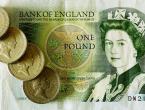Spot gold fell slightly, the U.S. index was close to a one-year high; Washington "walked off the edge of the cliff"
On Friday (October 1), spot gold fell slightly, but it was not far from the one-week high of $1,764.26 per ounce set overnight. Fed officials released conflicting information, and the number of initial jobless claims rebounded last week, causing the dollar to close overnight.
However, the U.S. dollar index overnight recorded a new high since September 28 last year to 94.504, and Washington reached a deadlock before the deadline for raising the US government’s borrowing ceiling, leading to cautious market sentiment and the U.S. dollar showing a safe-haven charm.
At 19:05 GMT+8, spot gold fell 0.16% to US$1754.29 per ounce; the main COMEX gold contract fell 0.15% to US$1754.4 per ounce; the US dollar index fell 0.07% to 94.198.
Fed officials speak contradictory
Bostic: Nearly full employment at the end of next year
US Atlanta Fed President Bostic said on Thursday that sustained economic growth will push the United States to reach a level close to full employment by the end of 2022, when interest rates can begin to increase, and the pace of faster interest rate hikes thereafter "will not be hindered."
Bostic told reporters: "I think the economy is operating very strongly... By the end of 2022 it will be close to full employment, and there will be no obstacles to the normalization of policies in 2023." He also believes that the Fed has reached the threshold for reducing its bond purchase program. , And the current level of inflation and employment growth will provide justification for the first interest rate hike next year and three more interest rate hikes in 2023.
Jane Foley, head of foreign exchange strategy at Rabobank, said: “Last week’s Fed meeting added new vitality to discussions about the possible increase in the federal funds rate in 2022. This is beneficial to the US dollar in two ways. First, from From a direct interest rate differential point of view, the US dollar looks better. Secondly, US interest rate hikes and a stronger US dollar will put pressure on the growth prospects of emerging markets... The US dollar benefits from the decline in risk appetite."
Kit Juckes, a strategist at Societe Generale, said: “As long as the market still believes that the US will begin to tighten monetary policy within a reasonable time frame, the U.S. dollar should remain well supported.”
Evans: Interest rates must be kept low
But Chicago Fed President Evans said on Thursday that he believes that the current supply shocks pushing up prices will be eased next year. The United States still needs to maintain low interest rates in order to bring the inflation rate back to 2% for a long time, and inflation expectations "are not out of control." "Let us be patient and do not declare victory over inflation."
He said that next year the inflation rate may fall back to around 2.1%, and may rise to 2.4% in 2023. He expects the Fed to start slowly raising interest rates in 2023. If inflation does exceed that level, he hopes to tighten policy sooner, but he does not expect this to happen. His interpretation of a series of inflation expectations indicators is that the recent high inflation data has not become the long-term trajectory of US prices.
He also said that even now, he is still worried about whether inflation expectations are high enough to be consistent with the Fed's 2% target. "Since we announced our 2% target in 2012, inflation has almost always been below this expectation."
The Fed announced last week that it may start reducing stimulus measures as early as November. It also hinted that interest rates might be raised next year. Nine out of 18 policymakers expect that borrowing costs will need to rise next year.
Vincent Tie, sales manager of Singapore-based trader Silver Bullion, said: "Although some investors have been affected by the fall in gold prices, we have seen many reverse long-term investors buying gold to hedge against inflation and economic risks. As we enter the fourth quarter, We may see a reversal, characterized by a gradual increase in the low price of gold."
Congressmen from both parties continue to fight
The U.S. Congress passed a provisional bill on Thursday to avoid a government shutdown, but as the House of Representatives prepares to vote on the $1 trillion infrastructure bill, President Biden’s agenda is facing another test. Some progressive Democrats have vowed to vote against the proposal to invest in American roads, bridges and other infrastructure. They are angry that the Democrats have not yet reached an agreement on another trillion-dollar supporting proposal, which will serve society. And provide funding for climate change.
Congressional Democrats and Republicans also continue to quarrel over whether to grant the Treasury Department a debt authorization that exceeds the current legal debt ceiling of $28.4 trillion. Republicans do not want to raise the debt ceiling, calling it a problem for the Democrats because they control Congress and the White House.
Late Wednesday, the House of Representatives approved a bill to extend the debt ceiling suspension period to December 2022. Senate Democratic leader Schumer said that the Senate may vote on this "as early as next week," but it is expected that Republicans will stop it again.
Treasury Secretary Yellen said that if Congress does not take action to raise the debt ceiling, the United States may have an unprecedented debt default around October 18. Uncertainty has begun to penetrate the financial markets.
Standard & Poor's Global Ratings warned on Thursday that if the United States defaults on debt, it will have "serious and extraordinary" consequences for financial markets. However, the agency added that in the past decade, the U.S. Congress has passed legislation raising or suspending the debt ceiling five times during the political deadlock. It is expected that the US Congress will eventually resolve the debt ceiling issue in time.
National debt defaults are usually caused by economic and financial pressures, while the US debt ceiling debate is driven by political factors, and the US economy is recovering. Given that the U.S. dollar is the most important currency in the world, defaulting on U.S. debt will significantly increase the cost of borrowing in the U.S. dollar market.
Spot gold material drops to 1738 US dollars
On the daily chart, the price of gold fell below the 38.2% target of the downward (3) wave that started from $1834 at $1744. The market outlook is expected to further drop to the 61.8% target at $1688. (3) Wave is a sub-wave of the downward ((Y)) wave that started from 1917 USD, and ((Y)) belongs to the adjusted IV wave that started from 2075 USD 5.
On the hourly chart, the price of gold is expected to start a five-wave downward trend from US$1,764. It is expected to fall below the 38.2% target of US$1748, and further drop to the 61.8% target of US$1738. Wave 5 is the sub-wave of (3) Wave.











